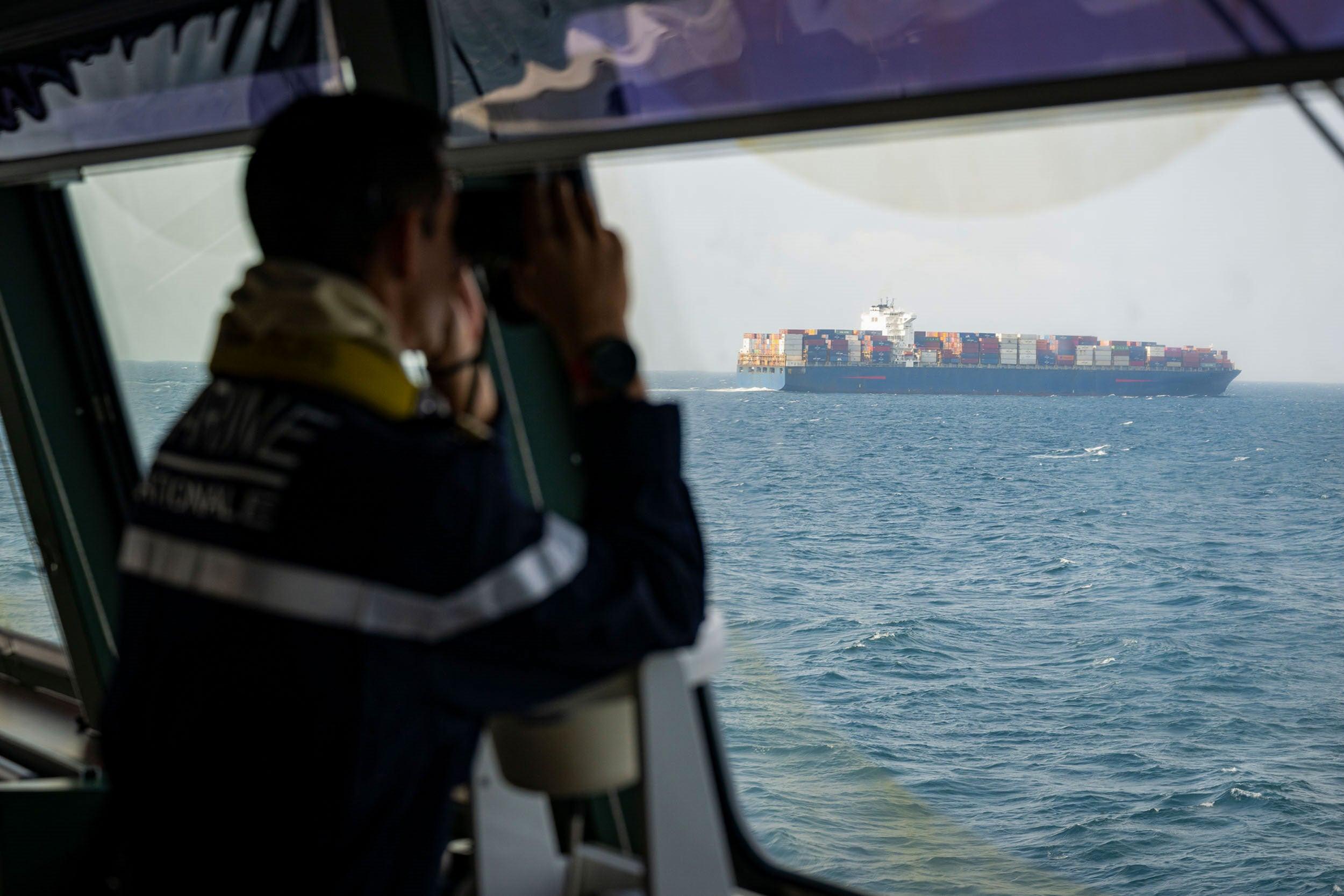
Liner operators were reluctant to shift operations back to the Red Sea during what they saw as a fragile ceasefire between Israel and Hamas in January of this year. The break in hostilities ended in March.
Those diversions produced billions of dollars in windfall profits for carriers in 2024. But the Trump administration’s ongoing tariff policy aimed at engineering a global trade reset has undercut business on the benchmark eastbound trans-Pacific and weakened demand to the point that container rates there are testing lows not seen since 2023. Carriers have been shifting tonnage and blanking voyages in an aggressive attempt to rightsize capacity.
While U.S. and European Union naval forces have provided escorts for vessels, intensive sea-based attacks by the U.S. under the Biden and later, Trump administrations, into Yemen failed to neutralize the Houthis. The Navy, in fact, accidentally shot down a U.S. fighter jet in December, and lost two more overboard – one when the aircraft carrier it was launched from made a sudden maneuver to avoid Houthi weaponry, and the other as the result of a failed carrier landing.
In 2025, the Houthis escalated attacks on shipping, sinking at least two merchant vessels and inflicting casualties among international crews. The recent spike in attacks includes sophisticated coordinated strikes involving missiles, unmanned boats, and armed boarding parties targeting commercial ships from various nations, not only those with direct ties to Israel. The Houthis also continue to target Israel with direct missile attacks.
A report Oct. 3 by the British Royal Navy’s United Kingdom Maritime Trade Operations cited continuing intereference of vessels’ GPS systems in the Red Sea, Gulf of Aden and the Persian Gulf.
Vincent Clerc, chief executive of A.P. Moller-Maersk (OTC: AMKBY), stated that even after a ceasefire between the United States and the Houthis, shipping firms are unlikely to send vessels through the Red Sea until security is reliably restored, noting that the risks to crew safety and vessels are still unacceptably high.
Soren Toft, CEO of Mediterranean Shipping Co., the world’s largest carrier, also has cautioned against a rapid return to the region until security improves.
Ocean Network Express Chief Executive Jeremy Nixon said that the alliance’s full-year forecast faces headwinds due to persistent geopolitical uncertainties, including the continued incidents in the Red Sea. As a result, vessels are expected to keep rerouting around the Cape of Good Hope, he said, which places sustained pressure on the global supply chain.
Insurers and Protection & Indemnity (P&I) clubs which cover ocean shipping responded to shipping executives’ concerns about Red Sea safety by adjusting coverage terms, raising premiums, and issuing new guidance reflecting heightened geopolitical risks, according to insurer Marsh McLennan (NYSE: MMC). As attacks persisted, war risk insurers signaled increased caution by imposing exclusions—most notably the Red Sea war risks exclusion on certain reinsurance programs prior to the 2024 renewal.
Find more articles by Stuart Chirls here.
Related coverage:
Busiest U.S. port plans new container terminal for biggest ships
Trade war? Savannah containers near record volume
Asia-West Coast container rates plummet; demand seen waning through year-end